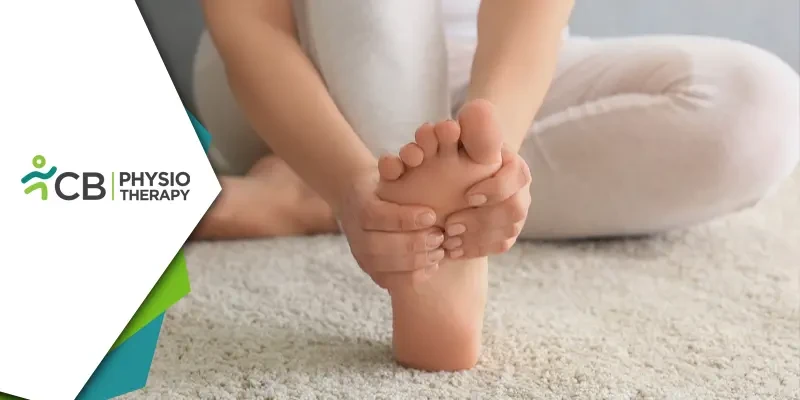Choosing the right footwear is crucial for maintaining foot health, yet many people fall victim to fashion trends or ill-fitting shoes, leading to a variety of foot problems. Here, we will explore ten common foot issues caused by poor footwear choices and how physiotherapy can play a pivotal role in managing these conditions.
Ten Common Foot issues caused by Poor Footwear are:
1. Plantar Fasciitis
Wearing shoes with poor arch support or inadequate cushioning can strain the plantar fascia, the ligament that supports the arch of your foot.Physiotherapy Management:
1: Stretching and Strengthening Exercises: Stretching and strengthening exercises recommended by physiotherapists target the calf muscles and plantar fascia to reduce tension.
2: Manual Therapy: Manual therapy is a hands-on technique used by physiotherapists to improve mobility.
3: Orthotics: The therapist also advises custom insoles that provide better arch support.
2. Bunions
Tight, narrow, or high-heeled shoes can cause the big toe to push against the other toes, leading to bunions.Physiotherapy Management:
1: Toe Realignment Exercises: Toe realignment exercises help reposition the toe and strengthen the surrounding muscles.
2: Manual Manipulation: Manual Manipulation helps improve the range of motion and thus improve joint mobility.
3: Education on Footwear: The Physiotherapist gives guidance on choosing shoes with a wide toe box to reduce pressure on the bunion.
3. Hammer Toes
Ill-fitting shoes that squeeze the toes can lead to hammer toes, where the toe becomes permanently bent at the middle joint.Physiotherapy Management:
1: Stretching and Strengthening: These exercises help to improve flexibility and strength in the toe muscles.
2: Toe Taping or Splinting: Toe taping or splinting helps correct the toe's position.
3: Footwear Advice: The patient is recommended shoes with adequate space for the toes.
4. Achilles Tendinitis
High heels or shoes with inadequate heel support can strain the Achilles tendon.Physiotherapy Management:
1: Eccentric Loading Exercises: Eccentric loading exercises help strengthen the tendon.
2: Manual Therapy: This technique helps reduce tension and improve mobility.
3: Heel Lifts: Heel lifts are used to reduce strain on the Achilles tendon.
5. Morton's Neuroma
Tight or high-heeled shoes that compress the toes can lead to Morton's neuroma, a painful condition affecting the ball of the foot.Physiotherapy Management:
1: Foot Mobilization: Foot Mobilization is a part of physiotherapy management, it helps improve joint and soft tissue function.
2: Metatarsal Pads: Metatarsal pads help alleviate pressure on the affected area.
3: Nerve Gliding Exercises: Nerve gliding exercises help reduce nerve irritation.
6. Heel Spurs
Shoes with poor cushioning or support can lead to the development of heel spurs, and bony growths on the heel bone.Physiotherapy Management:
1: Shockwave Therapy: Physiotherapists use a variety of electrical modalities like shockwave therapy to promote healing and reduce pain.
2: Stretching Exercises: Stretching exercises are used to focus on the plantar fascia and calf muscles.
3: Orthotic Devices: Patients are advised to use orthotic devices to provide cushioning and support.
7. Flat Feet
Wearing shoes with inadequate arch support can contribute to flat feet or fallen arches.Physiotherapy Management:
1: Arch Strengthening Exercises: To build up the muscles arch strengthening exercises are done.
2: Balance Training: Balance training is required to improve foot mechanics.
3: Custom Orthotics: To provide proper arch support custom orthotics are recommended.
8. Blisters
Ill-fitting shoes that rub against the skin can cause painful blisters.Physiotherapy Management:
1: Footwear Assessment: Blisters are formed if shoes do not fit correctly and thus cause friction.
2: Wound Care Advice: Proper care techniques are advised to prevent infection.
3: Education: The therapist educates the patient about protective padding.
9. Ingrown Toenails
Tight shoes or improper nail trimming can cause toenails to grow into the skin.Physiotherapy Management:
1: TENS Therapy: TENS therapy is a pain-relieving modality to decrease patient pain.
2: Footwear Recommendations: To prevent ingrown toenails, footwear should be worn, that does not squeeze the toes.
3: Manual Therapy: Manual therapy is done by physiotherapists to alleviate pain and inflammation.
10. Metatarsalgia
High-heeled shoes or those with inadequate forefoot cushioning can lead to pain in the ball of the foot.Physiotherapy Management:
1: Therapeutic Ultrasound: Therapeutic ultrasound helps increase blood circulation and thus relieves pain.
2: Padding and Taping: To alleviate pressure on the metatarsal heads padding and taping.
3: Footwear Advice: Recommending shoes with good cushioning and support is important.
Foot problems caused by bad footwear are prevalent, but they can be effectively managed with the help of physiotherapy. By combining tailored exercises, manual therapy, and appropriate footwear recommendations, physiotherapists can help alleviate pain, improve function, and prevent further issues. Remember, investing in the right shoes is investing in your foot health.
If you're encountering any foot-related issues, please don't hesitate to contact us. For inquiries, appointments, and further details, visit our website at cbphysiotherapy.in/delhi or at 011-4084-6393.

